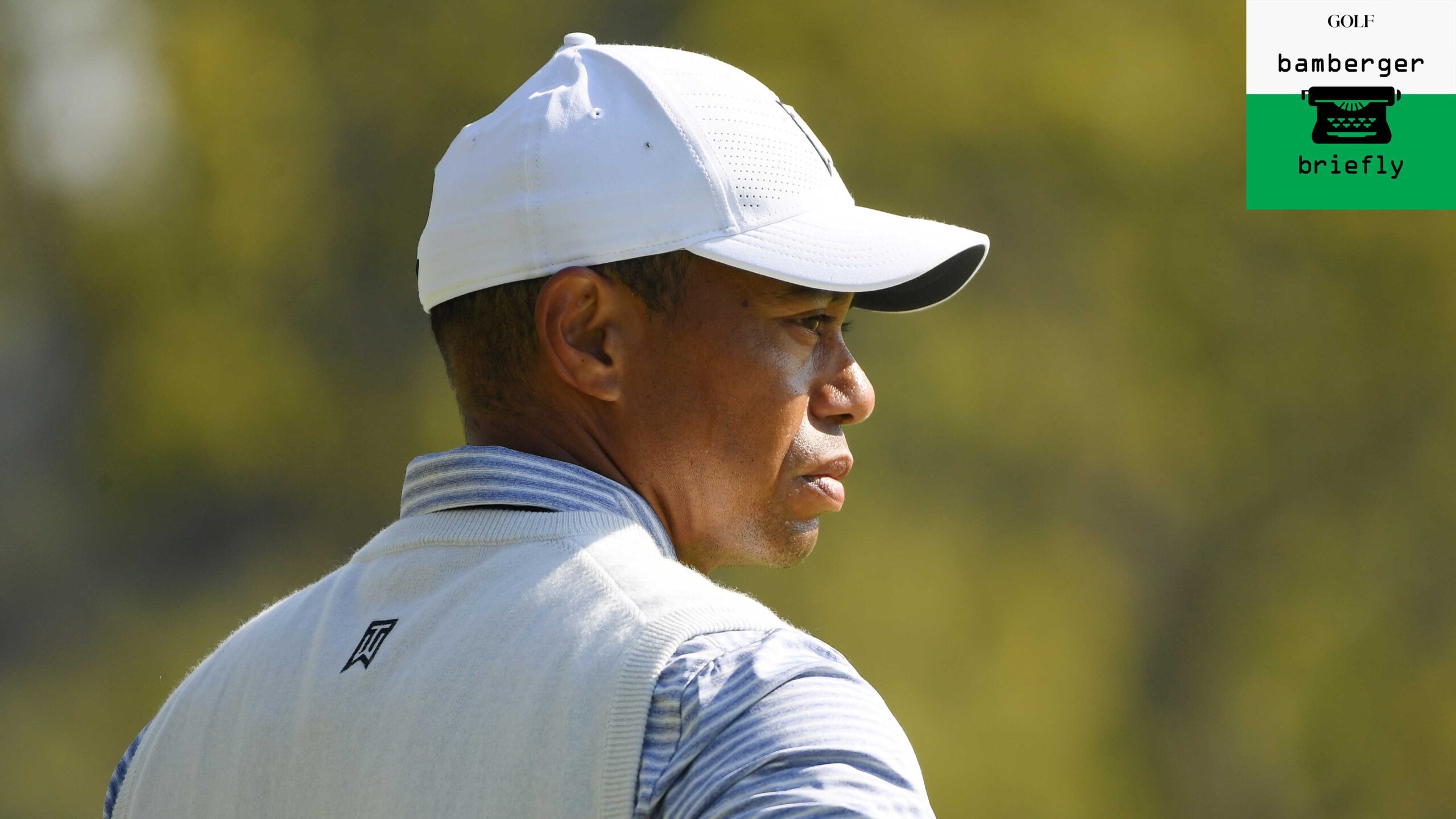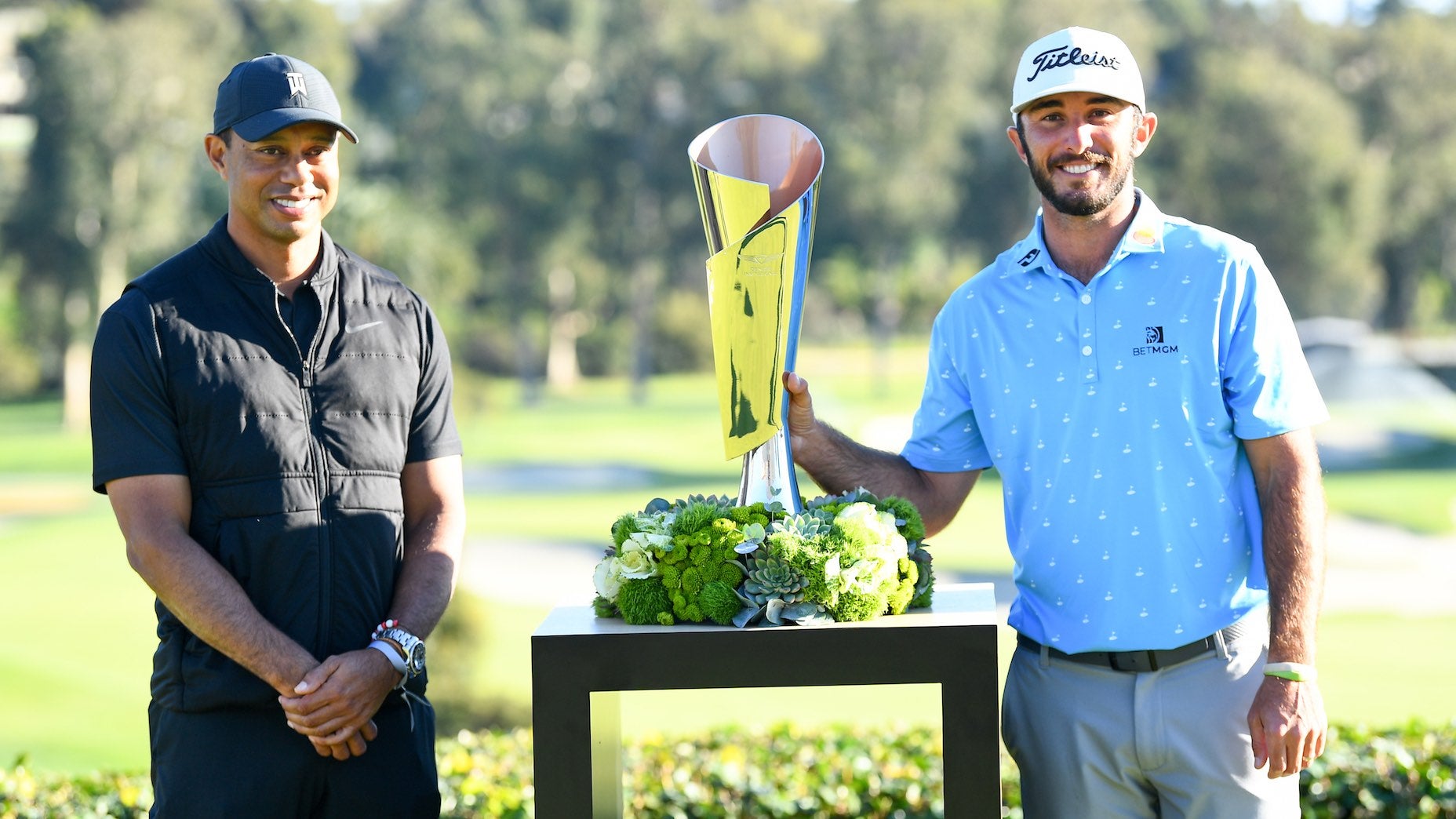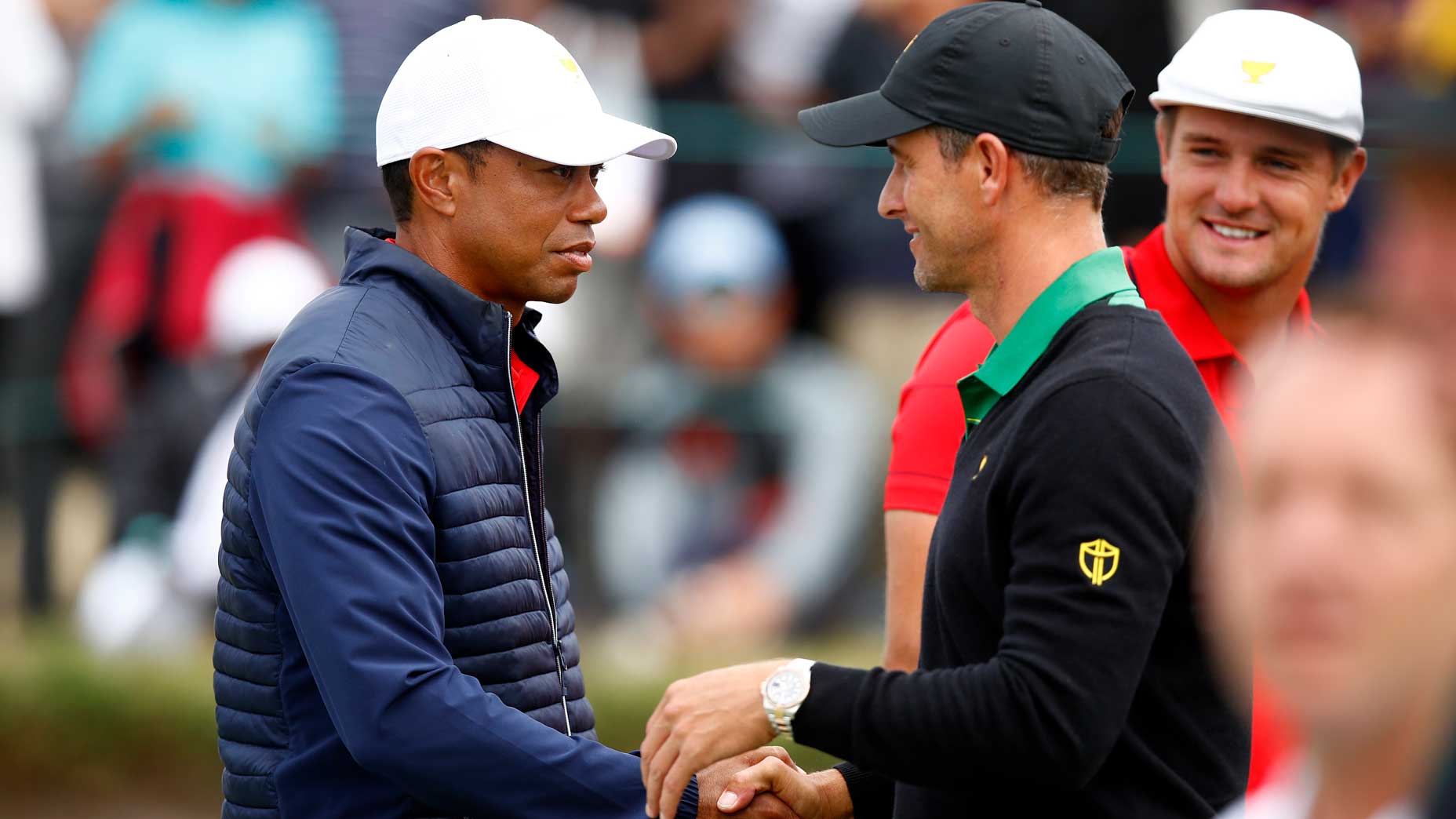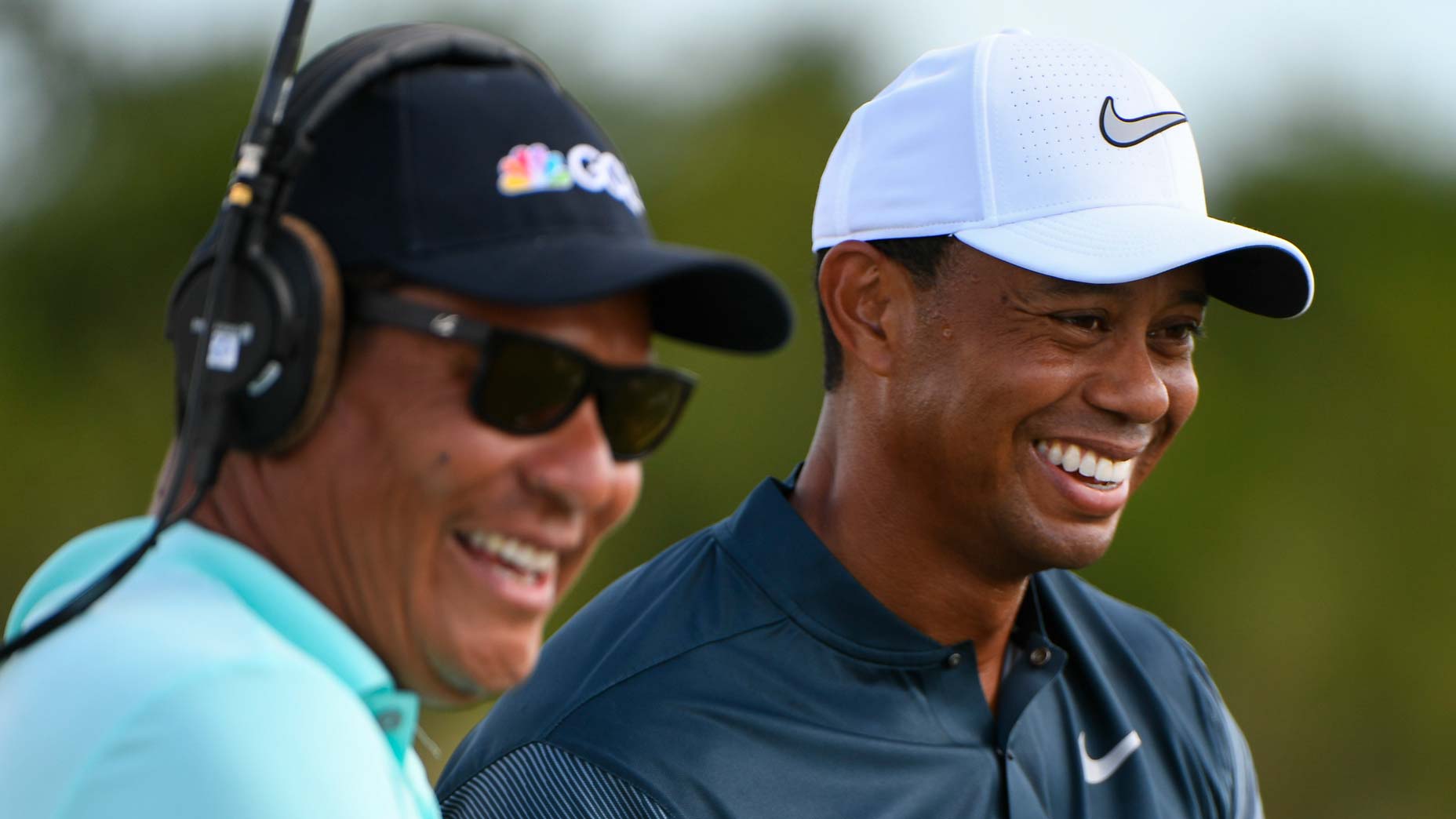In 2009, Tiger Woods ran over a hydrant in the middle of the night and soon after the tower he had built with such care collapsed. Jack Nicklaus was asked for his take on the revelations about Tiger’s private life. “It’s none of my business,” Nicklaus said.
In the years since then, as Woods has endured one setback after another — the surgeries, the chip yips, his 2017 Memorial Day DUI arrest — Nicklaus regularly has been asked for a Tiger Woods scouting report. His response is consistent: “Never underestimate Tiger Woods.”
Nicklaus, the only golfer with more major victories than Woods, was 2-for-2. Tiger’s private life is not our business. As for never underestimate: 16 months after that 2017 roadside arrest, and the stint in rehab that came out of it, Tiger won the Tour Championship at East Lake, a steppingstone to his win at Augusta in 2019.
Tiger Woods’ car accident: Everything we know about what happenedBy: Sean Zak
All of life is steppingstones. Tiger used to say this all the time, when trying to comeback from anything: “You have to take baby steps.” One of his go-to phrases. One of the things we admire about him. He took no shortcuts. He logged the hours. What he did was not a magic trick.
Now the question surely will be posed, to Nicklaus and to others: Can Tiger pull a Hogan here? Can he crawl out of a hospital bed, with screws and pins in his legs, and find his way back to the practice tee and, eventually, to a course late on a Sunday afternoon, TV cameras trained on him?
You can ask any question you want. I don’t think those are the most important and relevant questions. I’d be more inclined to ask this, variants of the same thing we’ve been wondering about Tiger Woods for years: Can he be the person off the course he wants to be? The public icon? The private man? The golf-course designer, the restaurant owner, the tournament host, the philanthropist? The father?
There’s reason to worry. There’s reason to worry because we care so much about Tiger Woods, for what he has accomplished and for what he represents.
Police officials have said there were no skid marks at the scene of the accident Tuesday morning, no apparent signs that Woods tried to apply the brakes to his Genesis Invitational courtesy SUV. Who knows what happened? Woods likely may not know himself. Did he doze off? Was he texting? Was he running late? It’s impossible to say.
This you can say with certainty: He’s lucky to be alive. He was lucky not to have hit another car. There are 30,000 fatal car crashes a year in the United States. Luck, luck, luck. Tiger was lucky. There is no indication that Woods incurred any sort of head trauma. That’s the best news. A reminder to us all: Wear a seat belt. Make sure your air bags are functioning properly.
And make sure your head is in the right place before you get behind the wheel of a car. Tiger’s was not on that night after Thanksgiving in 2009. It was not on Memorial Day in 2017. As for Tuesday, we can’t say.
There’s reason to worry because we care so much about Tiger Woods, for what he has accomplished and for what he represents.
My phone was chirping and chiming on Tuesday, as news of the accident was breaking. My car is a manual transmission. I actually got lost in an unfamiliar neighborhood after pulling off a highway and filing some notes for a news story. I hit a curb while making a poorly judged U-turn. I shouldn’t have been driving right then, not while talking on the phone and my mind in a thousand different places. Nothing happened. I was lucky. We’ve all been there.
Tiger’s life is hard. The kids on Tour today — Justin Thomas, Jon Rahm, Bryson DeChambeau, Max Homa — don’t know how hard it is. They grew up on the legend of Tiger. The 15-shot win at Pebble in 2000. The yacht and the jet and the adoration. Presidents courting him. All that power and all those monster-engine cars. But nobody, that we know of, has ever really been able to take a good look under the hood.
In the recent two-part HBO documentary about Woods, one of the most telling moments was the airing of home video that showed Tiger doing some goofball dancing with his high-school girlfriend at a suburban party. It’s notable because we can imagine how rare that was for Tiger. When, between his birth at the end of 1975 and turning pro in 1996, did Tiger Woods ever get to be a kid?
He’ll carry around the costs implied by that question for the rest of his life. Tiger will have the greatest orthopedic surgeons in the world helping him to get back on his feet. They can’t help him address that question.
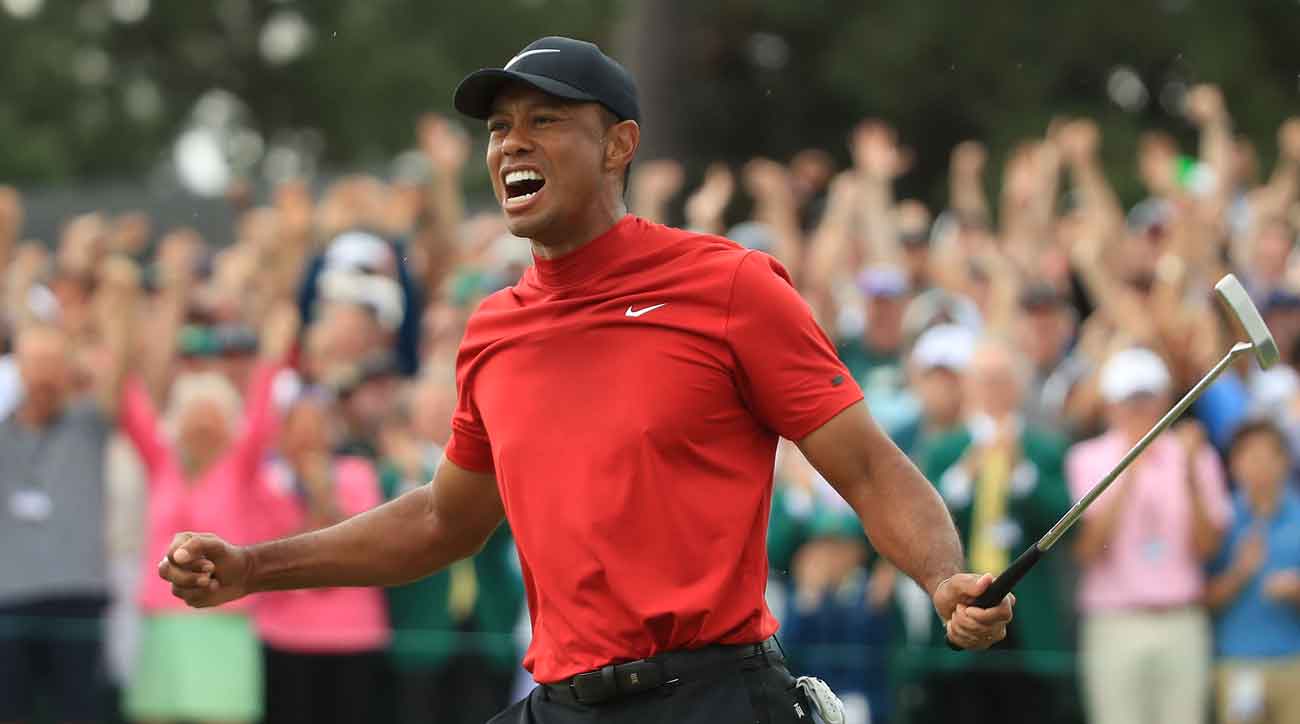
Tiger’s life and times have lifted many of us because he is the American dream. His mother emigrated to this country from Thailand. His father was a proud Black man from modest means who got to college on his intelligence and baseball skill and to graduate school on his intelligence and military service. Tida and Earl raised Tiger to apply his own intelligence and athletic gifts and capacity for work to a difficult and remunerative thing, elite amateur golf followed by elite professional golf. Nobody could have predicted everything else that would come with it.
All of his life, Tiger has wanted to be judged by the numbers he put in boxes on scorecards and the shots he played to get there. It’s been astounding. But those scorecards are only a starting point for how we viewed him as a teenager, as a single man in his 20s, as a married man in his 30s, as a single father in his 40s. Is it fair? No. Is it the way of the world? Yes.
Max Homa opens up on emotional reaction to Tiger Woods crashBy: Dylan Dethier
Tiger has always wanted more. Michael Jordan wanted more. Arnold Palmer wanted more. Phil Mickelson wants more. It comes with the territory. It comes with the personality type that is able to produce outsized greatness. Tiger was in Los Angeles because he is the host of the Genesis Invitational, played at an iconic course, Riviera, not far from his childhood home in Cypress.
As Bobby Jones had the Masters and Arnold had the Bay Hill Invitational and Jack Nicklaus has the Memorial, Woods now has his own event. In time, if his good luck continues, the tournament will become only more important to him. Something extra in a life that already had everything. Of course, in a normal life, at 45 you’re just hitting your stride. You’re just starting to figure out what it’s all about.
Woods stayed in Los Angeles, after the tournament he hosted but in which he did not play, for a two-day GolfTV shoot, directed by Peter Berg (Friday Night Lights) and featuring David Spade (Tommy Boy) and Dwayne Wade (The NBA on TNT) and other names-you-know. The towels on his golf bag, at least some of them, are stamped with GolfTV. You can put all of this under the category of more-more-more. That’s an observation, not a judgment.
Also, this: The pursuit of more doesn’t quiet the mind. It doesn’t promote a good night’s sleep.
As for Tiger’s tomorrows, don’t ever underestimate the man.
Michael Bamberger welcomes your comments at Michael.Bamberger@Golf.com
